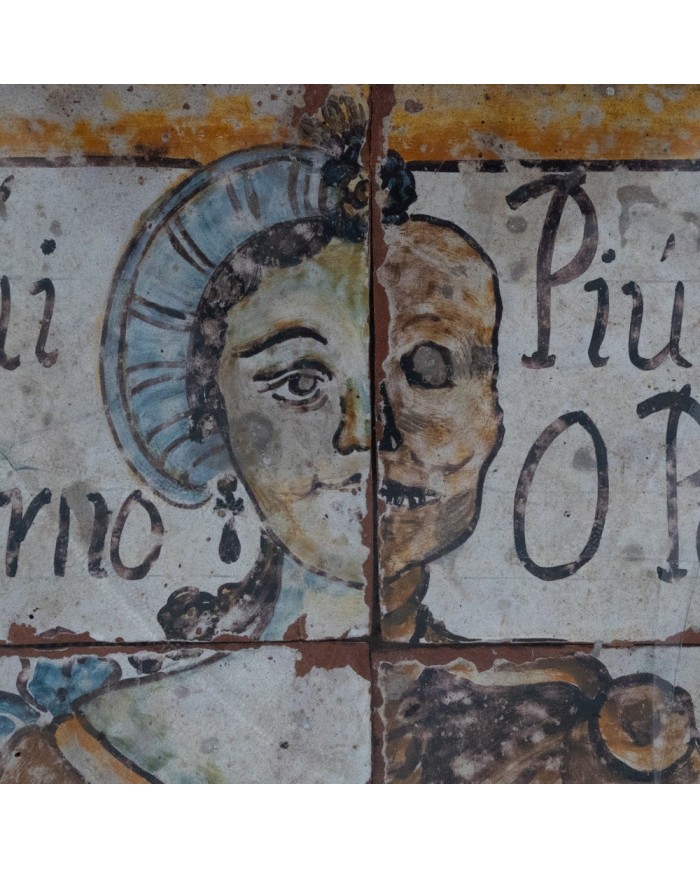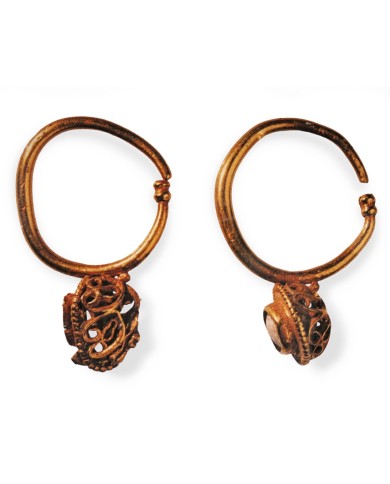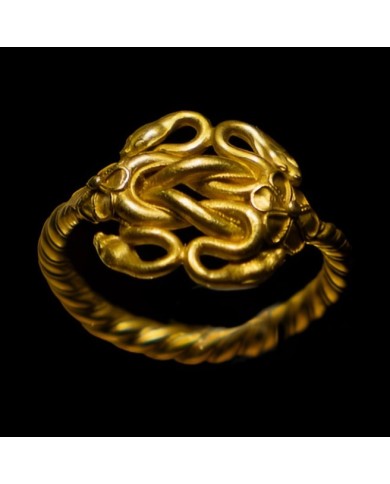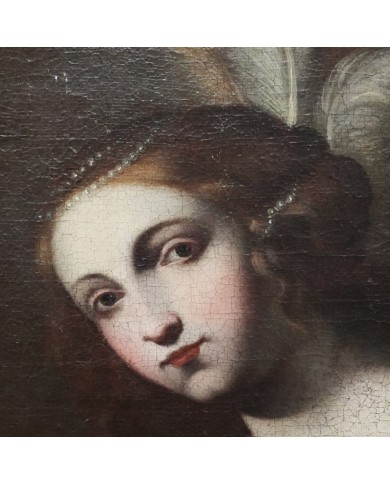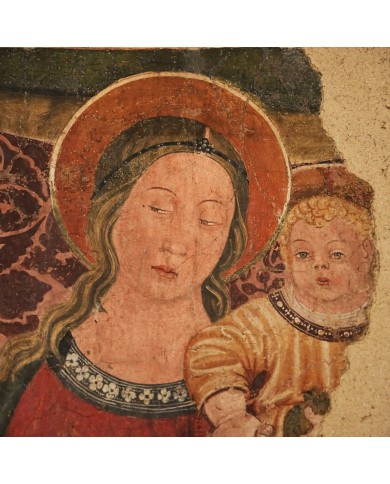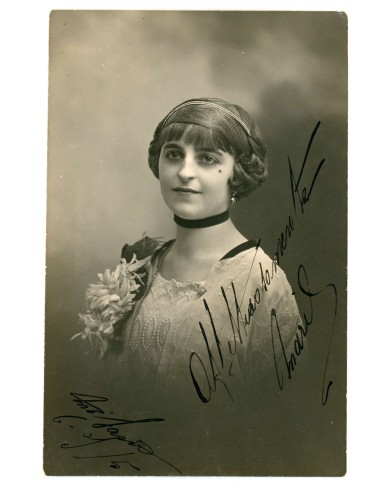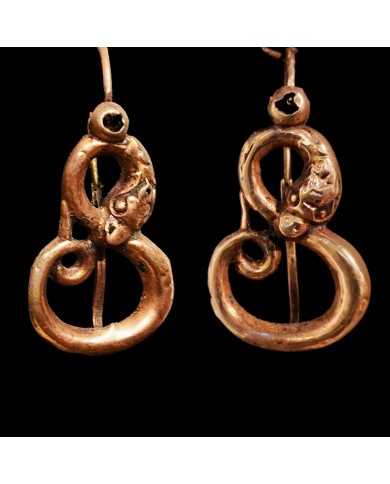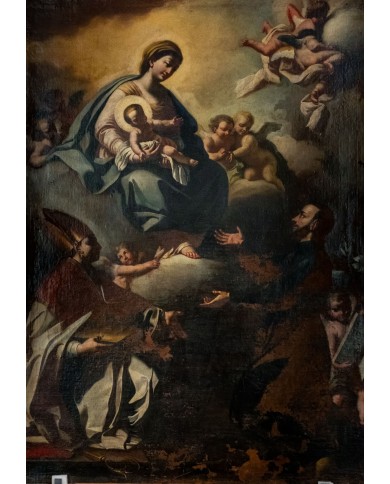The girl with the pearl earring
Approaching the town of Gioi, one is fascinated by its position, perched on steep slopes immersed in the green Cilento hinterland, with its two bell towers characterising its silhouette. A position dominating the Alento Valley, which, as enchanting as it is strategic, constituted the raison d'être and fortune of Gioi, making it, during the Middle Age and the early Modern Age, an industrious and flourishing reality made up of the hamlets of "la Sala, Salella, Moyo Troyano, lo Vetrale, lo Piano et Ostiglano" to which are added those of "Perito, Cardillo et Pelleri casali dela terra del Yoyo".
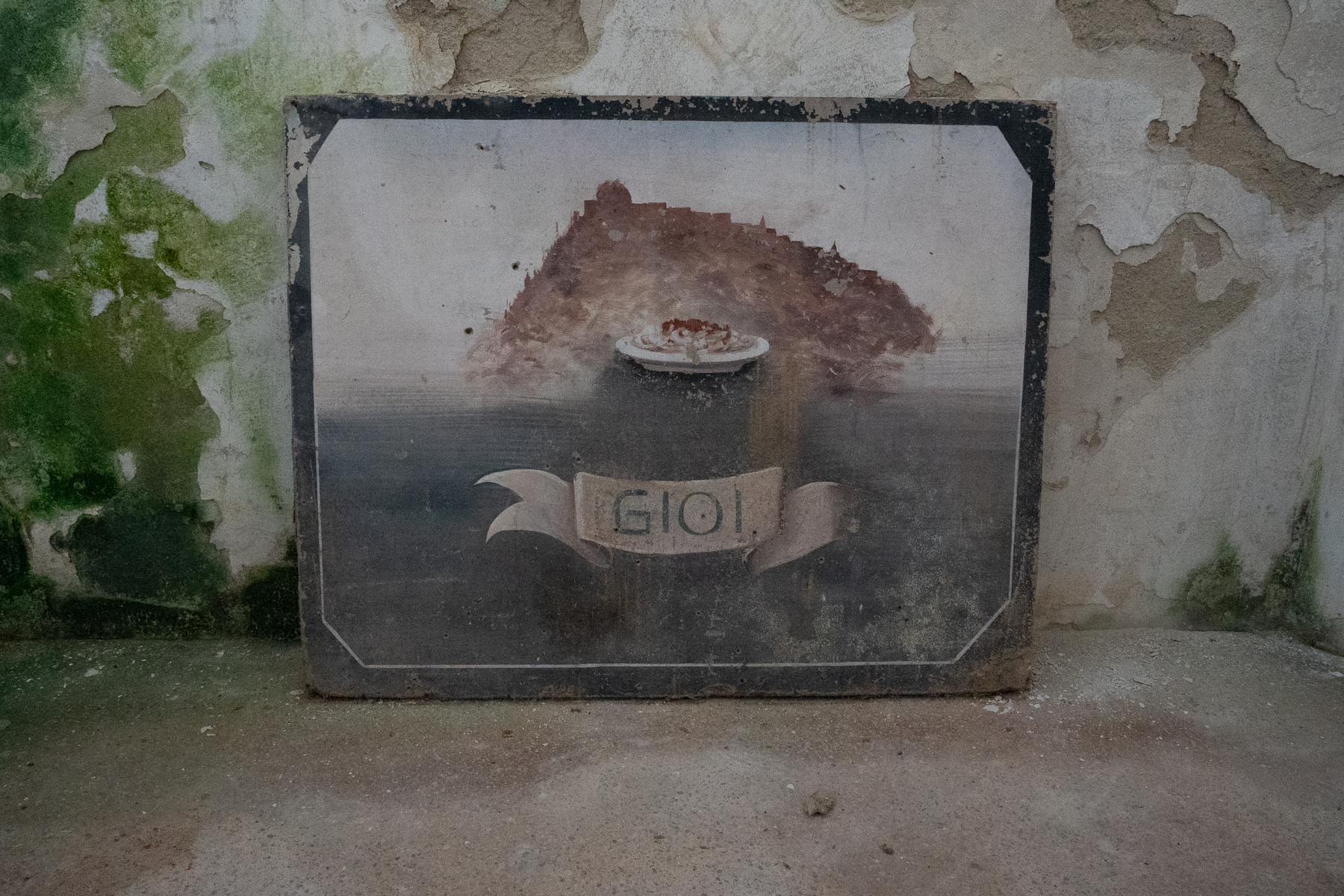
At the time of the construction of the Convent of San Francesco, the economy was that of a community linked to agro-sylvo-pastoral activities with the typical productions of the area: wheat, wine, oil, acorns, as well as the manufacture of pannilana and leather, and the production of the prized local silk sold at the two Fairs of San Giacomo and that of the Cross, at which the Genoese, Florentines, Sienese and even French came. A flourishing trade that led in 1492 to certain Vitale di Salomone, a Jew from Salerno, requesting the captain of Gioi to 'set up shop in this Land of Yoyo'. And in this flourishing Land in 1466 the building of the Convent of San Francesco began, which remained active for over three centuries when it was suppressed in the French Decade by Joachim Murat. Three centuries of consecrated life and material and spiritual assistance on the part of the Observants, who even today, with a bit of imagination and suggestion, we can imagine walking in their saii in the cloister of the convent, a place of peace and silence, where we can still contemplate the frescoes that narrate the life of the poverello of Assisi. As evidence of the importance of ancient Gioi, it should be emphasised that it was not even the only monastery; in fact, in 1520 the construction of the Monastery of Santo Jacovo began, completed in 1526, and described in the mid-eighteenth century by Baron Antonini as an 'ancient, noble and rich Monastery of women where the most conspicuous families of Cilento keep their daughters'.
FOTO CONVENTO - CHIOSTRO
And it was precisely in the 18th century that the Convent was enlarged with the construction of the church of San Francesco, no longer used for worship and largely stripped of its furnishings, but inside which significant traces remain, such as its late Baroque stuccoes, the wooden case of the majestic 18th-century organ by the Carelli organ builders of Vallo della Lucania, or the wooden pulpit and altar.
.jpg)
Walking down the main aisle of the Church of the Convent of San Francesco in Gioi, one comes across some majolica tiles, beautiful and terrifying at the same time, depicting a woman, half young and smiling and half a skeleton surrounded by an inscription in vulgar language.
.jpg)
“Più Bella Fui Più Brutta sono/O Inferno O Penitenza/Eliggete/ O momentaneo/diletto in questa/vita O Eterno/tormento nel altra/vita O mai, mai/e poi mai/O Sempre, Sempre/e poi Sempre/O godere/O patire/Rècipe"
"More Beautiful I Was More Ugly I Am/O Hell O Penitence/ O momentary/love in this/life O Eternal/torment in the other/life O never, never/and then never/O Ever, Ever/and then Ever/O enjoy/O suffer"
We are in the presence of a memento mori - a Latin expression meaning 'remember that you must die' - i.e. a work of art used to invite people to reflect on the meaning of life, to detach themselves from material goods and their transience and to prepare for the divine judgement between salvation or eternal damnation. The memento mori were present in both the secular and ecclesiastical spheres and were embodied in frescoes, paintings, sculptures, miniatures, books and architectural elements depicting skulls, skeletons, clocks, extinguished candles or withered flowers as symbols of the passing of time and the fragility of existence and human vanity. Here, too, the woman is depicted at the height of her beauty and vanity: beautiful, smiling, well dressed and holding flowers in her right hand. On the other side is the skeletal body, bare of any accessories. In the living half, the young woman is dressed in the type of dress en vogue in the 16th century, an expression of the Italian Renaissance and southern Italy that filtered all the trends from northern Europe and Spain, with a dress that, unlike the tapered figures of previous centuries, enhanced the feminine, maternal and feminine forms and sanctioned the detachment of the skirt from the rest of the dress. Thus on a close-fitting corset, with a square neckline with crossed threads presumably in gold or embellished, goes to tighten on the belly to exalt the ample skirt, according to the fashion of the verdugale of Spanish origin, where the skirt is inflated with tricks that in later centuries would become real structures (farthingale) that noblewomen would wear under the actual skirt. The colours of the dress of the noblewoman depicted in these maiolica tiles are also frequently used: the Alexandrian colour (dark turquoise) or sky colour, shades of aerino and faded were also used, as were various shades of yellow, from the lightest and brightest golden yellow, through the yellowish goosefoot to the darkest goosefoot. A dress in full accordance with the suntuary laws and the style of the time that wanted the costume to be harmonious and in tune with the natural colours that reflected composure and sobriety. Also noteworthy is the headdress, equally showy and decorated, quilted with strings of pearls or semi-precious stones. The structure of this kind of headdress, a typical accessory for married women, rose above the gathered and braided hair, sometimes enclosed in nets crowning the forehead and falling back over the shoulders.
.jpg)
No less important and yet almost unnoticed is an earring on a woman's right earlobe. It is a pendant earring, composed of three elements attached to each other. These are most probably pearls and stones set as was the custom in goldsmiths of the time. In fact, it was common to find pendant earrings of this shape, very often with hook, baroque pearls and amorphous stones of amethysts, garnets or rock crystals. Very often between the hook and the final drop was a metal or engraved or chiselled connecting element, typical of the Florentine Renaissance style. We can tell from the costume and the accessories worn that this is a noblewoman. Both for the richness of the ornaments and their refinement. As far as fabrics are concerned, to obtain these types of materials, dyes with natural pigments and minerals, one had to belong to a wealthy, bourgeois class. The same applies to the purchase of precious materials and luxury items such as jewellery.
However widespread the presence of memento mori within the area of the National Park of Cilento, Vallo di Diano and Alburni, no other representations similar to this one in the Church of San Francesco in Gioi are known, but it is an iconography found in the rest of Europe and the Americas.
Allegory of mortality, with a standing woman before a pyramid, her left half in fashionable clothing, the right half a skeleton holding an arrow. 1784 Etching and engraving with hand-colouring. © The Trustees of the British Museum
"Gedenck O Mensch Sich wer Du bist/Wie ungleich Dott und Lebendig ist"
"Remember, O Man, Look who you are / How unequal Dead and Alive are", oil on canvas, 46 x 38.2 cm; South Germany, 18th century
Public domain via Wikimedia Commons.
..

